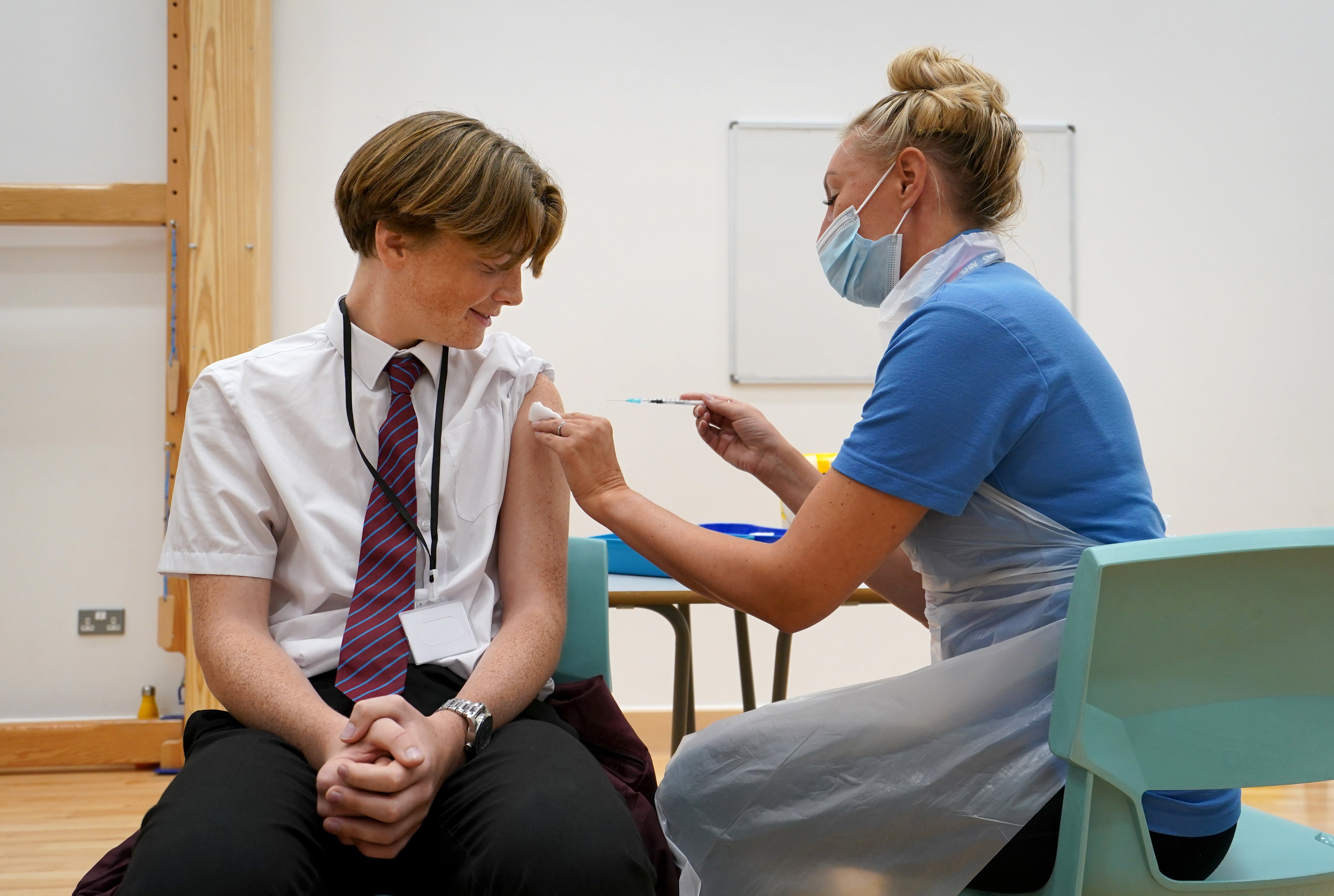School pupils in deprived areas ‘much less likely’ to have Covid-19 vaccine
Take-up also varies among ethnic groups.

Pupils in the most deprived communities of England are “much less likely” to have received a dose of Covid-19 vaccine than those in other areas, new analysis suggests.
There are also likely to be sharp differences in take-up based on ethnicity, eligibility for free school meals and whether English is spoken as a first language, the analysis found.
Just over a third (36.1%) of 12 to 15-year-olds at state-funded schools in the most deprived areas of England are estimated to have received at least one dose of vaccine, compared with 70.3% in the least deprived areas.
Pupils eligible for free school meals have much lower vaccination coverage than those not eligible (35.9% compared with 58.9%), while schools with a higher proportions of pupils eligible for free school meals also have a lower take-up of jabs.
The analysis, which has been published by the Office for National Statistics (ONS), is based on vaccinations delivered up to January 9.
First doses of Covid-19 vaccine began to be rolled out to 12 to 15-year-olds in England on September 20 2021 and were initially delivered mainly by NHS teams in schools.
This changed just before the autumn half-term holiday, when parents and children became able to book a jab online at a local vaccination centre.
Overall, just over half (52.5%) of all pupils aged 12 to 15 at state-funded schools in England are estimated to have received at least one dose of vaccine.
Along with pupils in more deprived areas, pupils who speak English as an additional language are “much less likely” to have been jabbed, the ONS found.
Some 38.2% of this group are estimated to have received at least one jab, compared with 55.5% of those who speak English as a first language.
Take-up varies considerably among ethnic groups, with Chinese and Indian pupils most likely to have received at least one dose (75.5% and 65.7% respectively) and those from black Caribbean and Gypsy/Roma backgrounds least likely (both 12.4%).
The figure was higher for pupils identifying as white British (59.1%) than Bangladeshi (45.8%), Pakistani (34.3%) and black African (27.1%).
Although these contrasts can be partly explained by levels of deprivation, “large differences in the likelihood of being vaccinated by ethnic group still exist after accounting for available deprivation measures”, the ONS said.
The very high levels of school absence this term shows the impact that Covid-19 continues to have on children and young people
Responding to the figures, Paul Whiteman, general secretary of school leaders’ union NAHT said: “The very high levels of school absence this term shows the impact that Covid-19 continues to have on children and young people.
“The scientists are clear that vaccination is our best form of defence, and so it is vital that all eligible young people are able to receive either a first of second jab if that is what they choose to do.
“It is equally important that the Government and the NHS continue to ensure that young people and their families are provided with clear and reliable information so that they can make an informed choice.”
There has been a steep increase in the number of reported cases of coronavirus among children since schools returned at the start of the year.
The rate of new cases of Covid-19 among 10 to 14-year-olds in England stood at a record 2,534.9 per 100,000 people in the seven days to January 26, up week-on-week from 2,191.7, according to the latest Government data.